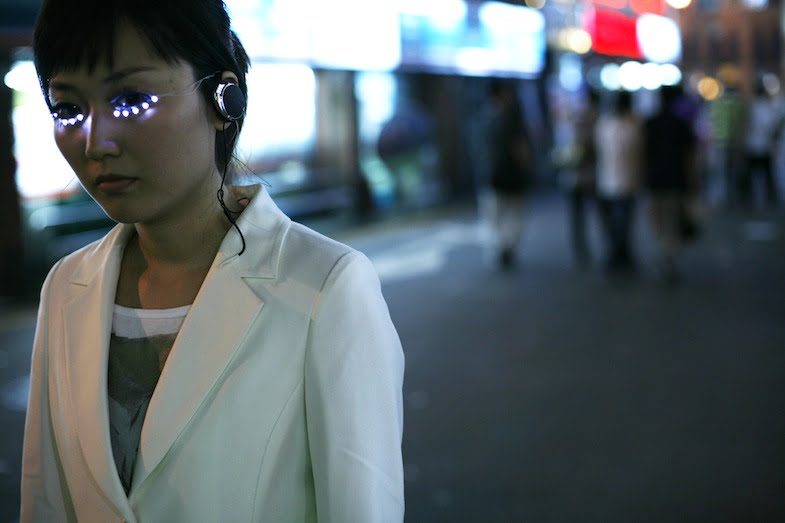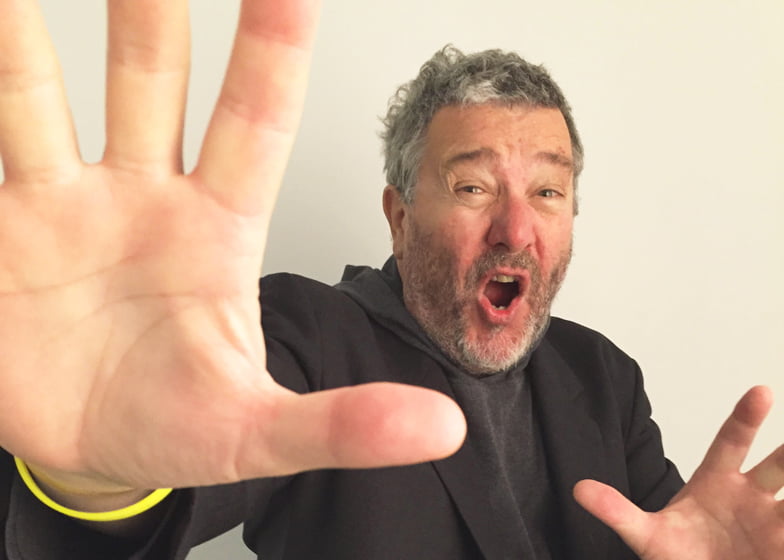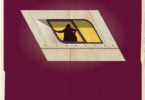Philippe Starck has spoken about the pros and cons of LED Lighting Technology. Saying that designers are morally obliged to use the latest materials to create more efficient products, But warned that dependence on screen-based devices is “sick”. “I don’t want to look archaic, but you have to feel things, you have to live them,” “On the screen you don’t feel it. You read it, you see it but you don’t feel it. It’s superficial.” Instead, he said that LED Lighting Technology, advances were one of the forces that created an imperative for new objects. “Today, 80 per cent of LED Lighting Technology products on the market are useless,” he said. “But when there is a new need, when there is a new LED Lighting Technology, when there is something new to say, then you have to do it.”
In this interview with Designer Philippe Starck, originally published on Dezeen, as “LED technology means designers are “obliged to redesign all lights” says Philippe Starck”. Philippe Starck speaks about led lighting technology with Marcus Fairs, the Euroluce fair in Milan in April, where he launched Ether, a new range of LED lights for Italian brand Flos. A brand he has been collaborating with for over 25 years, producing classics such as the 1990 moulded-plastic Miss Sissi bedside lamp and the 1998 horn-shaped Ara desk light. The new range includes a cordless, battery-powered table lamp – a sign of things to come, the 66-year-old said.
Best LED Lighting Technology For Modern Designs

Lighting, for example, needs to be completely rethought thanks to low-energy LED technology, he said. “If we speak about lights, LEDs have changed the consumption [of energy] and you are obliged to redesign all lights for ecological reasons.”
“The wires will disappear,” he said. “It’s not possible today for every light but now for a lamp of this size and power, we can. And everything that can disappear, has to disappear.”
The Ether range is customizable, allowing customers to choose materials and forms. Starck said that customization is another beneficial paradigm offered by technology and praised TOG – an online brand he works with that offers personalized mass-produced items – as showing the way forward. Portrait of Philippe Starck by Marcus Fairs

Marcus Fairs: How long do we have?
Philippe Starck: About 35 seconds.
Marcus Fairs: [Laughs] Tell me about your new Ether collection for Flos led lighting technology.
Philippe Starck: Around 15 years ago we make a collection for Flos, called Romeo with something that was really new. It was the first collection where, we did completely the led lighting technology bulb, and it was a huge success. It was very interesting because it showed that, a led lighting technology collection can be strong, new and have good longevity.
This time the challenge was to create the same longevity, but with new led lighting technology, because if there was no new led technology, we would have no reason to change Romeo. But now, because of led lighting technology, we can change it, and we even have to change it, because less is more. We have always to move towards dematerialisation: less and less and less and less.
It was very, very challenging to design a collection with the newest high Lighting technology, Not to fall into the trap of just making it look modern. Because when you make something that just looks modern it becomes obsolete very fast.
It was very important to use the highest led technology, and make something completely timeless, absolutely universal, but still flexible. That means that people can choose, personalize the details themselves very easily, like we do with [customizable furniture brand] TOG: the shade, the color, the material and everything like that.
I am very happy because, we have fantastic feedback on this collection. Everybody thinks it’s incredible. It’s not because the design is incredible. It’s because the target was right. We have developed this project with a lot of rigor and intelligence, to ensure the product targets the challenges – we have today: it has low energy consumption, quality, longevity, universality, elegance and it clearly shows the way of De-materialisation.
Marcus Fairs: And you have a rechargeable version as well.
Philippe Starck: Also yes. You know as batteries become more and more powerful, we dreamed of making a rechargeable lamp with a battery for 20 years. We made a lot of prototypes, but they never worked, because we never had the longevity of battery, or we never had the power or the quality.
But now we can have it. The battery exists, the LED Lighting Technology exists and the quality exists. The wires will disappear too. It’s not possible today for every light but now for a LED lamp of this size and power, we can. And everything that can disappear, has to disappear.
Marcus Fairs: So you think that one day all LED lighting Technology will be cordless and rechargeable?
Philippe Starck: Definitely yes. Wires are really archaic, like now how the regular light bulb, which looked modern until five years ago, until suddenly the LED Lights arrived and it’s suddenly a piece of history. It changed radically.
Marcus Fairs: You are talking about working with new led technology, to create new products. Just before the Salone del Mobile, Hella Jongerius published a manifesto saying that designers should stop producing new products. Do you agree with that?
Philippe Starck: You know, I have said that before. I have been saying it for years. I said that a designer should not be dedicated to produce materiality, but to produce service. Production for the sake of production is finished. The product for the sake of the product is finished.
Designers, like everybody, have to stop producing more useless products. I’ve been saying that for 30 years. Today, 80 per cent of led lighting products on the market are useless. Eighty per cent of products on the market are made by very talentless, very cynical people. They just create products to be sold.
But when there is a new need, when there is a new technology, when there is something new to say, then you have to do it. There are still products you have to do. Because if we speak about led lights, LEDs have changed the consumption of energy, and you are obliged to redesign all lights for ecological reasons. That’s why every producer of concepts has to think twice before they produce materiality.
But you know there are many different reasons to do. Sometimes it’s a new economic proposal, a new technological proposal, a new ecological proposal, a new sexual proposal, a new political proposal, a new sentimental proposal, a new poetic proposal.
Definitely we have hit a wall. Since years ago, the good producer of ideas finds new ways of producing energy. Good! But if we work very well, we shall solve maximum five to six per cent of future energy needs. That means nothing. Nice try, but it’s nothing. That’s why today the only, only strategy is de-growth.
But the problem is that the DNA of our species is growth. Our evolution is this talent we have to create and create and create. The difference between a cow and us is that the cow doesn’t create. Us, we create. We are genius, we are incredibly genius. That’s why to ask us to to stop and de-grow is a kind of DNA suicide. It’s a negation of everything we are.
That’s why the real, real question, and I’ve been speaking about this for years, is not de-growing – although for sure we have to do it – it’s how to create a positive de-growth. That means how can we technically and materially de-grow and continue the beautiful story of evolution by creativity.
Today I have no answer to the question and strangely I see almost nobody working on this idea. What will be the positive de-growth? That’s why the people who say that, it’s nice. It’s well known, but it’s not precise enough. It’s too easy to say that everybody has to stop. No. It’s not exactly so simple.
Marcus Fairs: You’re referring to Hella Jongerius’ manifesto?
Philippe Starck. Yes, yes, yes, yes, yes.
Marcus Fairs: I suppose it’s easier for a furniture designer to say “no more new things” because we already solved the problem of sitting.
Philippe Starck: Yes, there are enough chairs. But see the new company called TOG. The reason I work with this company is because there is a new proposal. It’s a philosophical, almost political proposal: customization. Because we will have less and less money, but people will have the same needs. And millions of new people will have needs. So the only fair way to answer to these needs is mass production. Only mass production can raise the quality, kill the price and give [products] to everybody.
Mass production works. For 30 years I have made mass production with success. People are happy. I see also that people are very happy to buy something of very good quality, very reliable, good longevity. But there are millions of products like that, and I am unique, I’m different. I want something different for me.
And there are two universes like that. I have to think about how reconcile, to bring back together, two things that are opposite: the world of brain, the computer, the engineering, the machine, the industry. And the world of intuition, fantasy, art, sweat, old know how, craftsmanship.
Today it’s industry or craftsmanship. With industry we know the problem: millions of products all the same. But craftsmanship is difficult to find, expensive, and no longevity, no quality. That’s why this idea of TOG, where we take the industrial structure and to say you can customize everything yourself, works. It’s a unique proposal. You see there is a new angle where you see you can help.
It’s not a big thing but if people are a little more happy, if they need a chair and they can buy a chair they can customize and feel better, feel creative, it’s good. It has longevity. Longevity is definitely the most modern parameter. That deserves to be done. But if it’s not that, it doesn’t deserve to be done. It’s to repeat the same thing.
What we can see everywhere, and also in the Milan fair, is that everything is trendy, very very trendy, and if it’s trendy but stupid, but finally is 250 grams of material, it’s okay. It’s stupid but it’s acceptable. But to make a trendy table, of 12 kilos of plastic or wood or steel, difficult to put in the garbage, it’s ridiculous. The only avant-garde word is longevity, transmission, heritage.
Marcus Fairs: Can you explain that?
Philippe Starck: Longevity, transmission, heritage. Before, you buy a skirt for yourself for three months. Now you have to buy a skirt for your life and your daughter’s.
Marcus Fairs: Will this happen though? Do people really want to be able to customize everything and keep things forever?
Philippe Starck: Ah, but it is a huge success. And it’s very interesting to see that people appreciate the model, the low price. It’s fun, it’s joyful. They love the proposal, they love the TOG philosophy, they say a lot of things like “we are part of TOG, we are part of the tribe, of this way of thinking” and that’s very nice.
Marcus Fairs: What will that mean for more traditional companies that don’t offer customization?
Philippe Starck: They can do it too! Nobody obliges them to stay where they are. Everybody could create TOG tomorrow. They just have to decide to do it, that’s all. They have to understand that people need it.
You know, a lot of journalists ask me: what is the new trend? Hopefully there is no new trend! The only trend now is freedom, freedom of difference. We are all different and all these companies around us are different, for different people. You can choose. Definitely there is too much product, we all agree. But interestingly with TOG, with one company, with one mould, with one chair, every chair can be totally different. Anybody can do that. It’s just a little bit more complicated, that’s all. TOG is completely interactive.
Marcus Fairs: I was doing an interview with Patricia Urquiola yesterday and we were talking about how technology is changing the way people interact with design and designers. While we were talking there were three other people filming her on their phones. She said that she feels this phenomenon of recording and, sharing everything on social media is more interesting than what she does. She was fascinated by that.
Philippe Starck: I am a little suspicious about that. First, people now record everything they do. That means perhaps in two generations we shall have no more the software of memory. Why try to remember? You think you have taped everything but you don’t know that you will never see what you’ve recorded. Never. Nobody will ever see the pictures again. That means it’s erased. It’s not in the brain, it’s perhaps in the cloud but nobody will go to see the cloud. And this idea of living everything through a 2D screen, it’s no life. I think it’s really dangerous.
And why connect everything you do? If you go to pee, I’m not sure if that is interesting for me to see. I’m happy for you but you don’t need to make a movie of that and show it to me. And billions of people are sharing things that are no more interesting that going to the toilet. And it doesn’t connect people more. That’s the problem.
Marcus Fairs: So you think it’s still important that people come to a city like Milan and have dinner together and talk together…
Philippe Starck: Yes. I’m sorry but I don’t want to look archaic, but you have to feel things, you have to live them. On the screen you don’t feel it. You read it, you see it but you don’t feel it. It’s superficial.
Me, I have no telephone, I have no computer, I have nothing. When I am in a place, I feel it. And because I feel it, I can afterwards create something and give back the result of the feeling. And the result of the feeling is a lot more complex than just remembering what you had seen or what you have recorded.
Jasmine Starck: Especially now when people shoot something, they don’t even look at the real thing. They only look at the screen.
Philippe Starck: It’s sick. It’s sick and the damage will be astonishing.
Marcus Fairs: And that’s the damage to what? Human genes? Or society?
Philippe Starck: We lose. You know it’s the first time in the history of humanity that the level of intelligence is falling. We think we’re becoming more and more intelligent, which was true, but for the first time the level of intelligence is going down. That’s something scientific that is terrifying me.
Jasmine Starck: We have a few more minutes left.
Marcus Fairs: Okay. I’m not sure where to go after that… what’s your favourite colour?
Philippe Starck: [Laughs]
Marcus Fairs: Quickly tell me about the ceiling light you’ve done for Flos. The PR woman was telling me a funny story about when you went to a restaurant…
Philippe Starck: I have made this spotlight, which is adjusted with a broomstick. And it’s not an invention. I design hotels and things like that and I want a beautiful spot of light in the perfect centre of the table, like a candle. But if the table gets moved, the lights don’t work, because the spot arrives one metre from the table.
One day I was in an old Italian restaurant, perhaps Cipriani in New York, and I saw a guy with a broomstick moving the light like this [makes banging noise]. And I said, it’s so simple! Because there are remote-control spotlights, which are very costly; nobody can afford it. I’ve tried to put it in all my architecture and nobody pays for that.
And it’s so simple to take a broomstick. We have made a special stick; we have created a telescopic stick, but we don’t know how to display it [at the fair]. But you know, these types of things deserve to be done. We have invented a new way of turning [the spotlight], we have designed a circle where the broomstick fits in to adjust the light, and that’s all. But it’s a real service.
You see the difference? Make a new spotlight, so nice, so cute, so what? We have made it so the guy can adjust it with a broomstick.
Know more about Modern Architectural Designs,
- Creative Lighting Concepts of Lamps make my Interior Design Intriguing.
- Enter Through Minipool In Modern House Architecture.
- Multifunctional Building “Mondeal Square”.
- Modern LED Lights for House Decoration – Spatial Geometric Lighting Series.
- Designer LED Lights Concept Ideas For Smart Home Decor.
- MEP Services : Architect Must Knowledgeable About Public Health Engineering.
Marcus Fairs: I lived in Seville many years ago and my favorite bar had a TV high up on the wall above the door. It didn’t have a remote control, so when the bar staff wanted to change the channel, they used a long wooden stick to poke the controls from behind the bar.
Philippe Starck: I love this type of thing. You know, when you see something that helps people, you have to do it. When people do it to put more money in their pocket, it’s obsolete.







Leave a Comment
You must be logged in to post a comment.